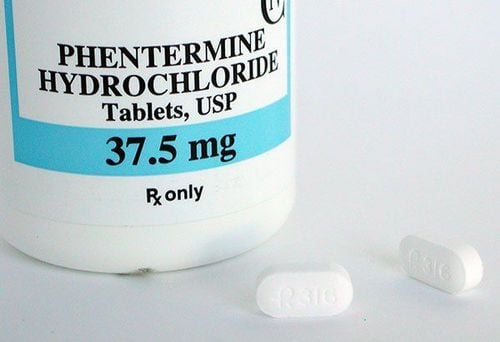This is an automatically translated article.
Regular exercise improves your overall health, fitness and quality of life. Exercise also helps reduce the risk of chronic diseases such as type 2 diabetes, metabolic cardiovascular diseases, many types of cancer, depression and anxiety, and dementia. The following article will help you better understand the role of exercise in preventing chronic disease.1. Physical activity, prevention and treatment of chronic diseases
Chronic diseases are long-term, sometimes permanent, non-communicable conditions that change over time, with no known cure at the root. According to the World Health Organization (WHO), they are considered the leading cause in the world contributing 86% of all deaths and represent a growing burden on health care systems, medical development and health. and the welfare of a large proportion of the population, especially those aged 50 and over.According to a report of the Ministry of Health, the disease pattern in Vietnam has markedly changed from 1986 to 2010. The trend of the proportion of non-communicable diseases has been increasing continuously at a constant rate. high. If this proportion in 1986 was only 39%, then in 1996 it increased to 50%, in 2006 it was 62% and after only 5 years, in 2010, this proportion increased by 10 points to 72%. Contrary to this trend is the rapid decrease in the proportion of medical visits for people with infectious diseases (acute respiratory infections, tuberculosis, dengue fever, influenza epidemics, HIV/AIDS infections). ..). The proportion related to accidents, injuries and poisoning tends to level off. Thus, the disease burden in our country has shifted sharply to non-communicable diseases.
Also according to a 2010 WHO report, a large proportion of chronic diseases are preventable if four main risk factors are addressed: tobacco use, inactivity, alcohol consumption and poor nutrition healthy. Preventive measures can be taken before the disease develops and at any time during the progression of the chronic disease. Since chronic diseases and their complications contribute greatly to dependence, the prevention of complications and their recurrence is an important challenge for maintaining autonomy, especially is in the elderly.
A press release from INSERM (France) on the implementation of a collective expert assessment aimed at gathering scientific knowledge and analyzing, in the context of chronic diseases, the impact of operations physicality and its place in the care process. This review is based on a critical analysis of the international scientific literature carried out by a multidisciplinary team of thirteen researchers with expertise in various fields related to chronic diseases, from medicine sport to psychology.

Tập thể dục thường xuyên giúp cải thiện sức khỏe tổng thể, thể lực và chất lượng cuộc sống của bạn
Expert group These scientific elements form the basis for establishing recommendations for research as well as recommendations for health authorities on measures to take.
While rest has long been the rule in many chronic diseases, we are now seeing a real paradigm shift with scientific studies showing that, as physical activity recommendations When the nature and complications associated with the disease are taken into account, not only does exercise not worsen the condition, but it is also more beneficial as soon as its diagnosis is introduced.
Thereby, the expert group believes that physical activity is an indispensable part in the treatment of chronic diseases. It recommends the introduction of physical activity as early as possible in the care pathway for the diseases studied. It is also recommended to pre-prescribe drug therapy for mild to moderate depression, type 2 diabetes, overweight, obesity, and lower extremity peripheral artery disease.
The expert group also prepared disease-specific recommendations, but agreed on the appropriate frequency of physical activity - namely a minimum of three sessions per week.
For patients with characteristics that limit or affect adherence and long-term activity retention (older age, low socioeconomic status, social precariousness...) and/or have With little or no experience in physical activity, the expert group recommends a professionally supervised educational cycle of adaptive physical activity over a period of several months. The challenge is to enable these patients to experience physical activities tailored to their abilities and needs, to feel and derive pleasure from the impacts and to realize their health benefits. their.

Hoạt động thể chất là một phần không thể thiếu trong điều trị bệnh mãn tính
Patients may also be motivated by the positive self-image created by physical activity (or the negative view they would have of themselves without it). More specifically, having to embrace oneself in the face of an illness is seen by some as a responsibility or obligation.
2. How can exercise improve chronic conditions?
If you have a chronic illness, regular exercise can help you manage your symptoms and improve your health.Aerobic exercise can help improve cardiovascular health, endurance and aid in weight loss. High-intensity interval training is generally safe and effective for most people and may take less time. In high-intensity interval training, you alternate exercising at a high intensity and working out at a lower intensity for short periods of time. Even activities like walking at a higher intensity count.
Exercise with the right intensity can improve muscle strength and endurance, make it easier to perform daily activities, slow down the decline in muscle strength caused by disease, and bring stabilization of the joints.
Flexibility exercises can help you have optimal range of motion in your joints so they can function at their best, and stability exercises can help reduce your risk of falls.

Nếu bạn bị bệnh mãn tính, tập thể dục thường xuyên có thể giúp bạn kiểm soát các triệu chứng và cải thiện sức khỏe của bạn
Overweight, obesity: Emphasis on waist size reduction as a tracking parameter rather than weight loss and recommend endurance activity programs; Type 2 diabetes: Regular exercise can help insulin lower blood sugar more effectively. Physical activity can also help you control your weight and boost your energy. If you have type 2 diabetes, exercise can reduce your risk of dying from heart disease. Coronary Disease: Performing endurance activities regularly can be optimized by adjusting exercise intensity; Lower extremity peripheral artery disease: first-line treatment is walking; Heart Failure: Regardless of disease severity, all patients can benefit from an effortful retraining program, thanks to regular and gradual training. Ideally, 30 minutes of moderate activity five times per week during the final phase of the program, which should last a lifetime; Cerebral stroke : Reduce the impact of neuromuscular sequelae on patients' quality of life and prevent recurrence by improving cardiovascular capacity and muscle strength through regular physical activity that incorporates practice. practice daily techniques; Chronic Obstructive Pulmonary Disease (COPD): Improving quality of life and reducing functional limitations associated with complications through varied and long-term regular physical activity (endurance, muscle strengthening) , swimming, tai chi...); Asthma: Reduces intensity and frequency of attacks by improving VO2max, endurance and exercise capacity through endurance activities; Osteoarthritis: Exercise can relieve pain, help maintain muscle strength in affected joints, and reduce stiffness. It may also improve physical function and quality of life for people with arthritis. Cancer: Improve quality of life and reduce disease and treatment-related side effects (muscle deterioration, fatigue, treatment intolerance...) and recurrence by providing programs combination of endurance and muscle building. Exercise can also reduce the risk of dying from breast, colorectal and prostate cancer.

Tập thể dục cũng có thể làm giảm nguy cơ tử vong do ung thư vú
3. Safety exercises
Your doctor may recommend specific exercises to relieve pain or increase strength. Depending on your condition, you may also need to avoid certain exercises altogether or during flare-ups. In some cases, you may need to consult with a physical or occupational therapist before starting exercise.If you have back pain, you can choose low-impact aerobic exercises like walking or swimming. These activities put no strain on your back.
If you have exercise-induced asthma, make sure to always have your inhaler with you when you exercise.
If you have arthritis, the exercises that are best for you will depend on the type of arthritis and what joints are involved. Work with your doctor or a physical therapist to create an exercise plan that will give you the most benefits with less stress on your joints.

Nếu bạn bị hen suyễn do tập thể dục, hãy đảm bảo luôn có ống hít bên mình khi tập luyện
4. Exercise intensity
Before starting an exercise routine, it's important to talk with your doctor about how long your exercise sessions can last and what intensity level is safe for you.In general, try to accumulate about 30 minutes of physical activity a day at least five days a week. For example, try going for a brisk 30-minute walk most days of the week. You can even break down physical activity into short stretches throughout the day. Any activity is better than no activity at all.
If you can't do many of these activities, do as many as you can. Even an hour of physical activity a week can have health benefits. Start with moving more and sitting less, and work your way up to moving more each day.
If you have been inactive for a while, start slowly and build up gradually. Ask your doctor what kind of exercise goals you can safely set for yourself as you progress.
The important thing you need to remember is to always warm up well before training and note some preparations before exercise such as
If you have diabetes, remember to check your blood sugar before exercise because exercise can lowers your blood sugar. If you take insulin or diabetes medication that lowers blood sugar, you can eat a pre-workout snack to prevent hypoglycemia.
If you have arthritis, consider taking a warm bath before exercising. Heat can relax your joints and muscles and relieve pain before you start. Also, remember to choose shoes that are shock-absorbing and stable when training.
It is better to talk to your doctor about your medical condition so that he can get the best advice and choose the most suitable exercise for you. To prevent you from having heart disease and experiencing symptoms such as dizziness, unusual shortness of breath, chest pain, irregular heartbeat. Or unusual developments of other chronic diseases.
Please follow the website ( www.vinmec.com ) for more information on health care instructions, which we will update regularly.
Please dial HOTLINE for more information or register for an appointment HERE. Download MyVinmec app to make appointments faster and to manage your bookings easily.
References: mayoclinic.org, presse.inserm.fr,












